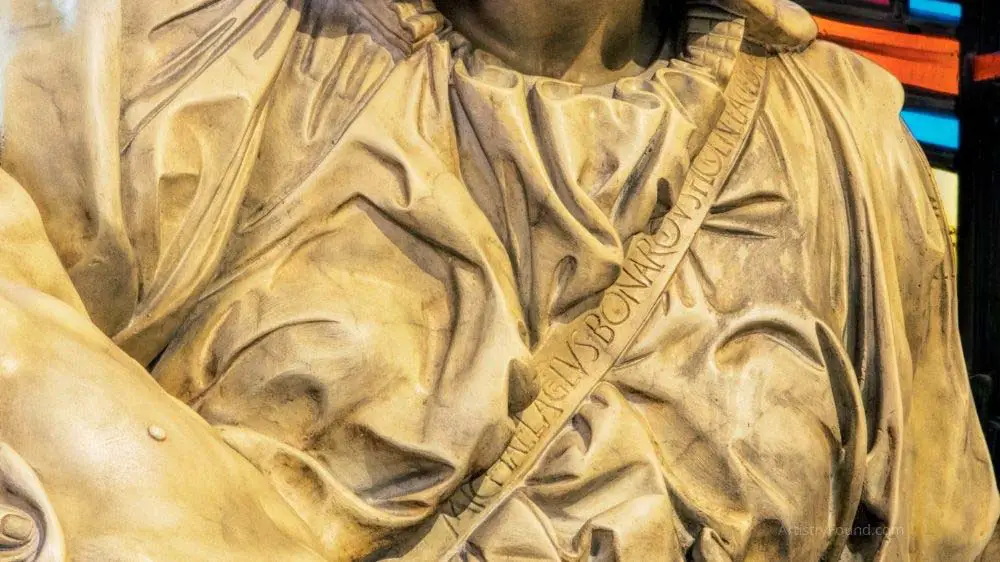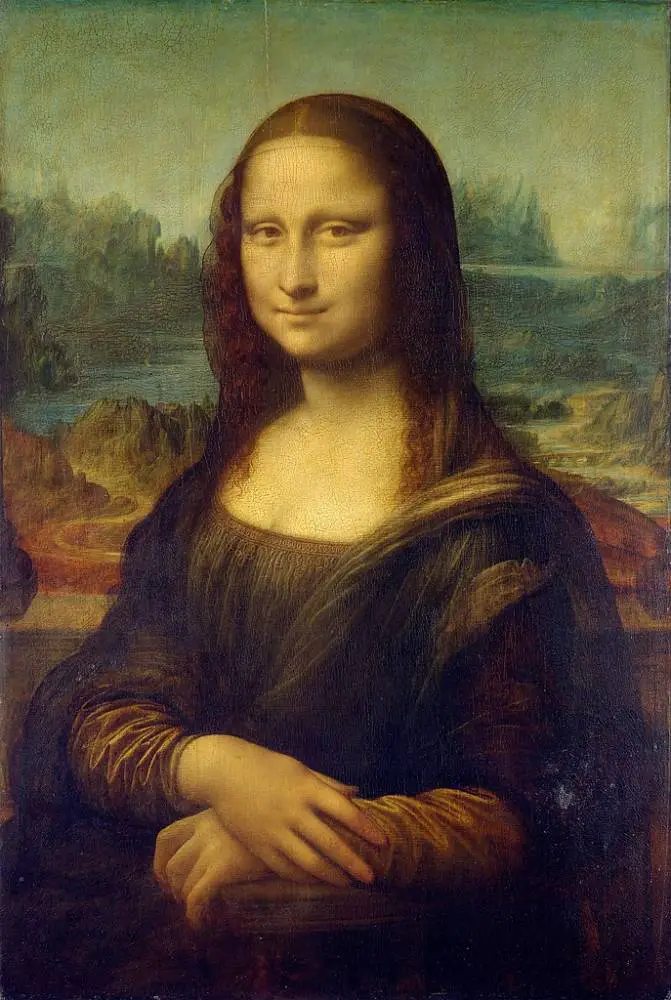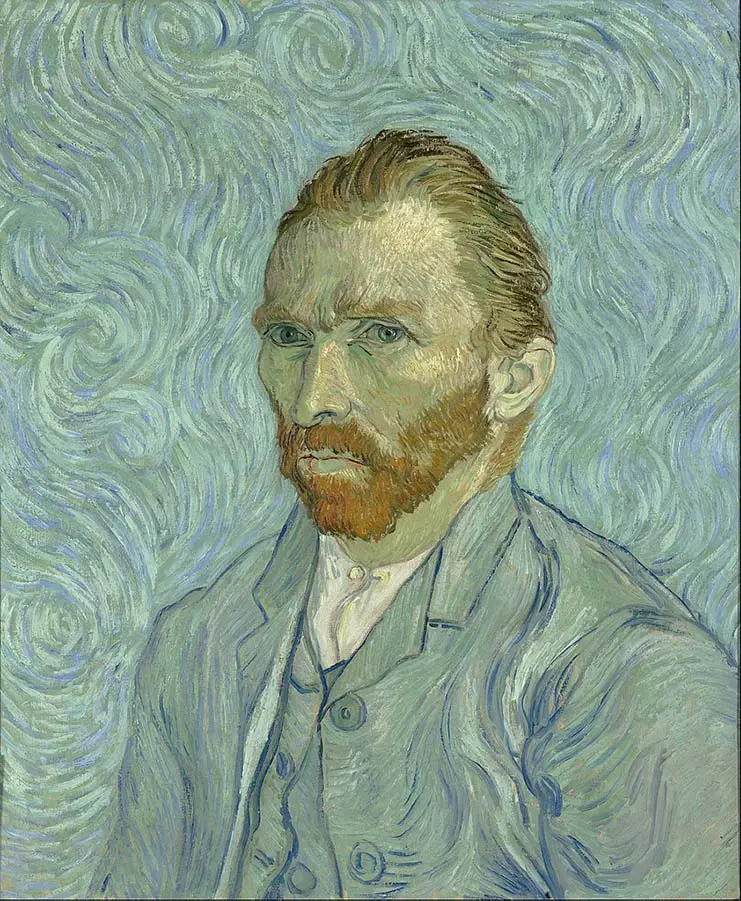Michelangelo’s Pieta: The Story of His only Signature
Michelangelo’s Pieta is the first and last art piece that the famous artist ever signed. But why did Michelangelo only sign the Pieta?
An Italian art historian of the period, Giorgio Vasari, claims that Michelangelo signed his sculpture after overhearing a visitor giving credit to a rival artist. But after spontaneously signing the work, he regretted it and swore never to sign any of his works ever again.
However, other art historians argue that his decision to sign the Pieta afterward wasn’t a spontaneous act at all. Instead, they believe that the signature was planned before the artwork was ever displayed.
No matter the truth, the signature shows that Michelangelo’s Pieta was unique to him, and getting credit for it was important to him, at least in the moment.
Keep reading to get the full story of Michelangelo’s signature on one of the most famous sculptures in the world.

(This article may contain affiliate links and I may earn a commission if you make a purchase)
Who was Michelangelo?
Michelangelo (1475-1564) was a sculptor, painter, architect, and poet in Renaissance Italy. He is considered one of mankind’s greatest artists and has created numerous famous works of art.
Although Michelangelo is famous for his painting on the ceiling of the Sistine Chapel, he is even better known for his incredible sculptures. You are probably very familiar with his Statue of David, but it was actually Michelangelo’s Pieta, that started his career on an upward trajectory.
Michelangelo’s Pieta Sculpture
The Pieta was made in 1498-1499 by Michelangelo and is 68.5 × 76.8 inches in size. Michelangelo’s Pieta is a marble sculpture depicting the Virgin Mary holding Jesus’ body in her lap.
The sculpture has a pyramidal structure with Mary’s head on the top corner. Mary’s dress widens, creating the pyramidal structure to the base, representing the Rock of Calvary (aka Golgotha, the site of Jesus’ crucifixion). Jesus is represented with a serene facial expression and the marks from his crucifixion are visible on his palms and stomach.
Michelangelo’s Pieta is his first art piece in a series of sculptures following the same theme – a crucified Jesus in the arms of a grieving Mary. These kinds of sculptures are all called “Pieta,” which is Italian for “pity” or “compassion.”
The Pieta is one of three ways that a sorrowful Virgin Mary is often portrayed. Michelangelo’s Pieta is carved from marble making it different from other Pieta sculptures. Earlier Pieta statues were usually much smaller and carved from wood.
History Behind Michelangelo’s Pieta
The Pieta statue was commissioned by the French Cardinal Jean de Bilhères as a funeral monument for himself.
But the Cardinal died on August 6, 1499, before the sculpture could be completed. Although the Cardinal never saw Michelangelo’s Pieta, the famous sculpture was still placed in the Chapel of Santa Petronilla as a funeral monument for the Cardinal until it was moved in the 18th century to St. Peter’s Basilica in Vatican City.
Michelangelo’s Pieta is the only piece made by a famous Renaissance artist to be installed in St. Peter’s Basilica and accepted by the Chapter of St. Peter.
Michelangelo’s Pietra was inspired by the art of the Alps and the Germanic sculpture group, the Vesperbilder.
Michelangelo’s Pieta and The Virgin Mary
Something else that makes Michelangelo’s Pieta different from other Pieta statues is his take on a youthful Virgin Mary. She is portrayed as unusually youthful and more peaceful than the older, sorrowing Mary that most Pieta’s show. Michelangelo had two reasons for portraying her in this youthful way:
- Since all beauty comes from God, and Mary is closely connected to the holy spirit, Michelangelo wanted her to be portrayed as young and beautiful.
- Since the Virgin Mary is considered to be a moral and beautiful person on the inside, it was important to him that she reflected that beauty on the outside.
Something else that sets this Pieta apart from Michelangelo’s other Pieta sculptures is the role of the Virgin Mary. She is alone, grieving and holding Jesus’ body in her lap.
In Michelangelo’s lesser-known Pieta called The Deposition (1547-1555), the Virgin Mary is not holding Jesus’ body alone, but instead is being helped by Nicodemus and Mary Magdelene.
Michelangelo’s Pieta Signature

However, the most important detail that makes this sculpture stand out from Michelangelo’s other works is that this Pieta contains his signature. Michelangelo never signed any of his other artistic works making this Pieta extremely unique.
So, out of all his works, why did Michelangelo only sign this Pieta?
The most widespread story of why Michelangelo signed this Pieta originates from a biography of Michelangelo made by the famous Italian artist and historian Giorgio Vasari (1511-1574).
According to Vasari, Michelangelo had overheard visitors thinking that rival artist Christoforo Solari had made the sculpture. So, in a spontaneous act, Michelangelo took his hammer and chisel and scrawled:
“MICHAELA[N]GELUS BONAROTUS FLORENTIN[US] FACIEBA[T]”
which translates to
“Michelangelo Buonarroti, Florentine, made this”
This signature was chiseled into the sash across Mary’s chest. Vasari reports that Michelangelo regretted his impulsive and prideful decision and was determined never to sign a piece of his work again.
But others claim that Michelangelo’s signature was not a spontaneous outburst like Vasari reports. Associate art curator, Aileen June Wang, published an article in 2004, claiming that Michelangelo’s signature was carefully planned. Wang states that Michelangelo’s signature was a deliberate move to increase his reputation and overall image as an artist.
Wang claims in her research that the band across the chest of the Virgin Mary serves no other purpose than holding Michelangelo’s signature.
Also, his signature style looks more like it was carefully carved than written as an afterthought, just like his choice of wording.
Michelangelo used an ancient Greek imperfect verb tense, suggesting that much thought was put into it. She believes that the deliberate separation of Michelangelo’s name emphasizes his self-perception as a creator conveying God’s message.
These details make Wang believe that the story behind Michelangelo’s signature has more to it than what Vasari has accounted for.
Even though we lack the whole truth, there is one thing we do know: This was the only time that Michelangelo ever signed any of his works. So in that way, Michelangelo’s Pieta is unique.
The Effect of Michelangelo’s Famous Pieta
Not only was Michelangelo’s Pieta his first commissioned artwork, but it is now one of the most valuable art pieces in the world today. He was just 24 years old when he created the piece, and the sculpture set the tone for the remainder of his long and successful career.
Although Michelangelo’s Pieta has gotten a lot of positive attention throughout the years, it has also had its critics.
In 1972 Michelangelo’s sculpture was attacked by a man wielding a hammer. The man rained down 12 damaging blows before being stopped. Since that time, Pieta has been surrounded by protective, bulletproof glass. Unfortunately, the sculpture was also damaged when movers accidentally broke off four of Mary’s fingers. However, all of the damage from both cases has been restored.
Aside from these incidents, Michelangelo’s Pieta has inspired faith, emotion, and imitation through its unique depiction of Jesus Christ and the Virgin Mary. Many people seek to be in its presence for both artistic and spiritual reasons.
The piece itself is not fully renaissance nor entirely classical in its form; Michelangelo managed to blend the two art styles. In addition, he didn’t use realistic proportions when sculpting the piece, giving the viewer a more creative and more accessible interpretation of this scene.
When Did Artists Start Signing Their Artwork?
Prior to the renaissance and Michelangelo’s time, it was not common for artists to sign their work. So it is not surprising that Michelangelo didn’t add signatures to his artwork.
Sophilos was the first known artist to sign his artwork. He added “Sophilos painted me” (Sophilos me grafsen) on pottery that he painted in 590-570 BC.
But the ongoing trend of signing one’s artwork didn’t start until the Renaissance period and most likely had just started to gain popularity around the time of Michelangelo’s career.
The trend, however, began to ensure that artists were credited for their work. In addition, an artist’s signature proved to be helpful to viewers and collectors of artwork to determine creation date and authenticity. Finally, artists like Picasso began to use their signatures to express creativity and to show transformation as an artist at times where he changed his signature.
Conclusion
No wonder Michelangelo’s Pieta has gained so much attention; I mean, the sculpture itself is a masterpiece. I would understand why Michelangelo would want to mark this piece as his own and not have it accredited to someone else.
Even if his signature wasn’t a spontaneous afterthought, the fact that he never signed any of his other works makes his signature on Pieta special.








